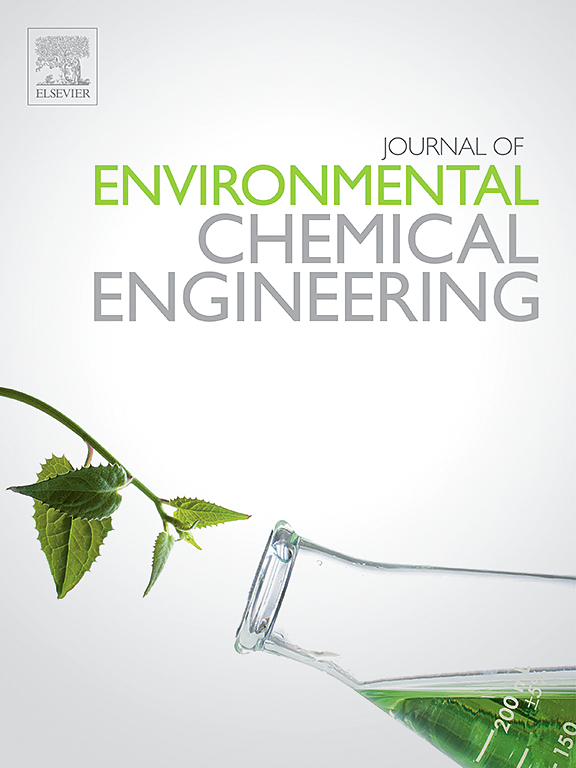A critical review of oxidation for membrane fouling control in water treatment: Applications, mechanisms and challenges
IF 7.4
2区 工程技术
Q1 ENGINEERING, CHEMICAL
引用次数: 0
Abstract
Membrane fouling seriously impedes the application of membrane technology in water treatment. Although oxidation achieved intensive attention in membrane fouling control, controversy results were observed in many works since oxidation may accelerate fouling and damage membrane under some circumstances and the underlying mechanism still remained unclear in complex water matrices. This study provides a comprehensive review on the recent progress of pre-oxidation and oxidation cleaning in fouling control for membrane (e.g., microfiltration (MF), ultrafiltration (UF), nanofiltration (NF), reverse osmosis (RO), forward osmosis (FO), membrane distillation (MD)). Common oxidation approaches (e.g., chlorine, ozonation, H2O2, sulfate radical (SO4●–), potassium permanganate (KMnO4) and Fe(VI) based oxidation) were systematically summarized and compared, along with their positive and negative impact on fouling mitigation. Furthermore, the fouling control performance and underlying mechanism were reviewed according to the recent published literatures. Ultimately, the challenges and future prospects of oxidation technology in membrane fouling control application were also proposed based on the current review. Overall, this review may provide the guidance for developing advanced oxidation strategy in controlling membrane fouling in water treatment and minimizing the potential drawbacks and risks of oxidation as a membrane fouling control strategy.
对水处理中用于膜污垢控制的氧化技术的重要回顾:应用、机制和挑战
膜污垢严重阻碍了膜技术在水处理中的应用。虽然氧化技术在膜污垢控制方面受到了广泛关注,但由于氧化在某些情况下可能会加速污垢形成并损坏膜,而且在复杂的水基质中,其基本机理仍不清楚,因此许多研究结果都存在争议。本研究全面综述了预氧化和氧化清洗在膜污垢控制方面的最新进展(如微滤(MF)、超滤(UF)、纳滤(NF)、反渗透(RO)、正渗透(FO)、膜蒸馏(MD))。系统总结并比较了常见的氧化方法(如氯、臭氧、H2O2、硫酸根(SO4●-)、高锰酸钾(KMnO4)和基于六价铁的氧化)及其对污垢缓解的积极和消极影响。此外,还根据最新发表的文献综述了污垢控制性能和内在机理。最后,根据目前的综述,还提出了氧化技术在膜污垢控制应用中面临的挑战和未来前景。总之,本综述可为开发先进的氧化策略控制水处理中的膜污垢提供指导,并将氧化作为膜污垢控制策略的潜在缺点和风险降至最低。
本文章由计算机程序翻译,如有差异,请以英文原文为准。
求助全文
约1分钟内获得全文
求助全文
来源期刊

Journal of Environmental Chemical Engineering
Environmental Science-Pollution
CiteScore
11.40
自引率
6.50%
发文量
2017
审稿时长
27 days
期刊介绍:
The Journal of Environmental Chemical Engineering (JECE) serves as a platform for the dissemination of original and innovative research focusing on the advancement of environmentally-friendly, sustainable technologies. JECE emphasizes the transition towards a carbon-neutral circular economy and a self-sufficient bio-based economy. Topics covered include soil, water, wastewater, and air decontamination; pollution monitoring, prevention, and control; advanced analytics, sensors, impact and risk assessment methodologies in environmental chemical engineering; resource recovery (water, nutrients, materials, energy); industrial ecology; valorization of waste streams; waste management (including e-waste); climate-water-energy-food nexus; novel materials for environmental, chemical, and energy applications; sustainability and environmental safety; water digitalization, water data science, and machine learning; process integration and intensification; recent developments in green chemistry for synthesis, catalysis, and energy; and original research on contaminants of emerging concern, persistent chemicals, and priority substances, including microplastics, nanoplastics, nanomaterials, micropollutants, antimicrobial resistance genes, and emerging pathogens (viruses, bacteria, parasites) of environmental significance.
 求助内容:
求助内容: 应助结果提醒方式:
应助结果提醒方式:


